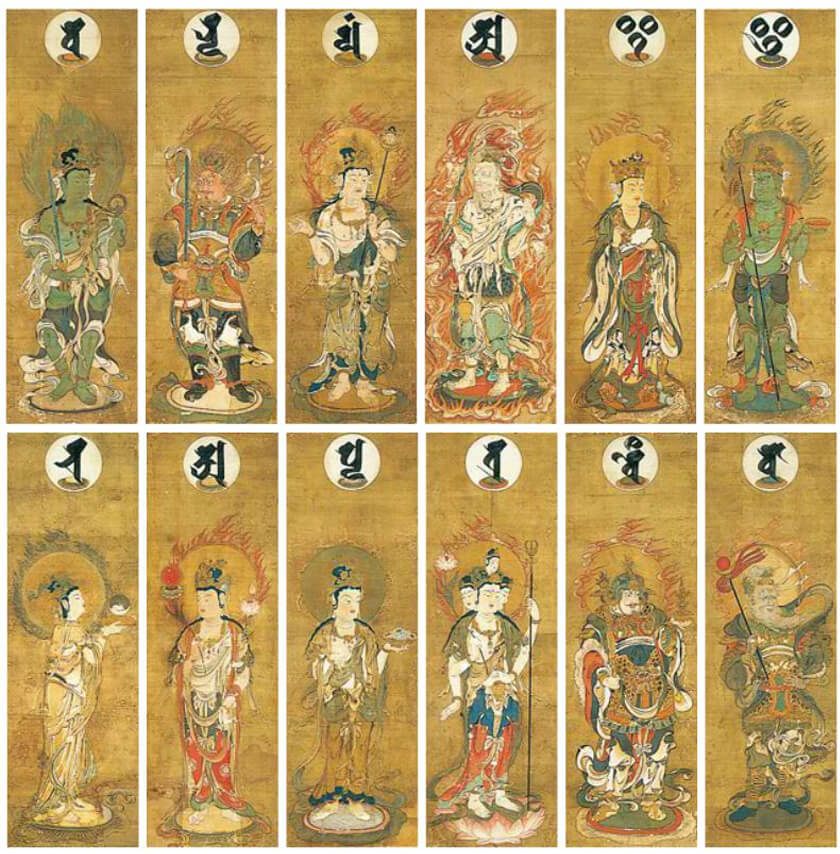Takuma School / Schools of Nihonga 010
Takuma School
Takuma School is a school of Buddhist painters associated with the Chinese-style painting that has its beginnings in the artist Tametou Takuma of the late Heian period and that flourished during the Kamakura period. This school actively accepted the style of Song dynasty Buddhist paintings which were imported in those days. It is characterized by the use of thick sumi ink lines and lightly applied cold colors that highlight the lines. Its simple but rigorous style is in contrast to the expression found in the wire-line drawing of Fujiwara Buddhist paintings that flourished from the mid-to the late Heian period or to the warm and rich colors as well as the magnificent expressions found in “*kirikane“. Moreover, Takuma School further adapted the Song style to fit the Japanese climate and led to the formation of one type of Buddhist painting of the medieval period. A representative work is Juuniten byoubu (Touji temple) by Tametou’s son, Shouga. Other artists of this school include Shunga, Chouga and Eiga. Takuma School continued until the latter half of the 14 th century.
*Kirikane:
Kirikane is a technique used to express designs and patterns by cutting leaves that have been made thicker by burning several sheets of leaf together (yakiawase technique) into very thin strips or small triangular, square or diamond shaped pieces and pasting them on a painting. The term kirikane is also used to refer to this kind of expression itself. The technique was imported from China. Examples of kirikane in Japan are found on sculptures and paintings of the Nara period, but it developed greatly from the Heian to Kamakura periods. Kirikane of the Heian period is characterized by its delicate and refined beauty that harmonizes with the soft colors. In the Kamakura period, kirikane skillfully rendered on a gold “dei” (powder manufactured from leaf) background became the main stream. It is a decorative technique used mainly in Buddhist paintings and sculpture.

Juuniten Byoubu / Shouga Takuma (Touji temple)

